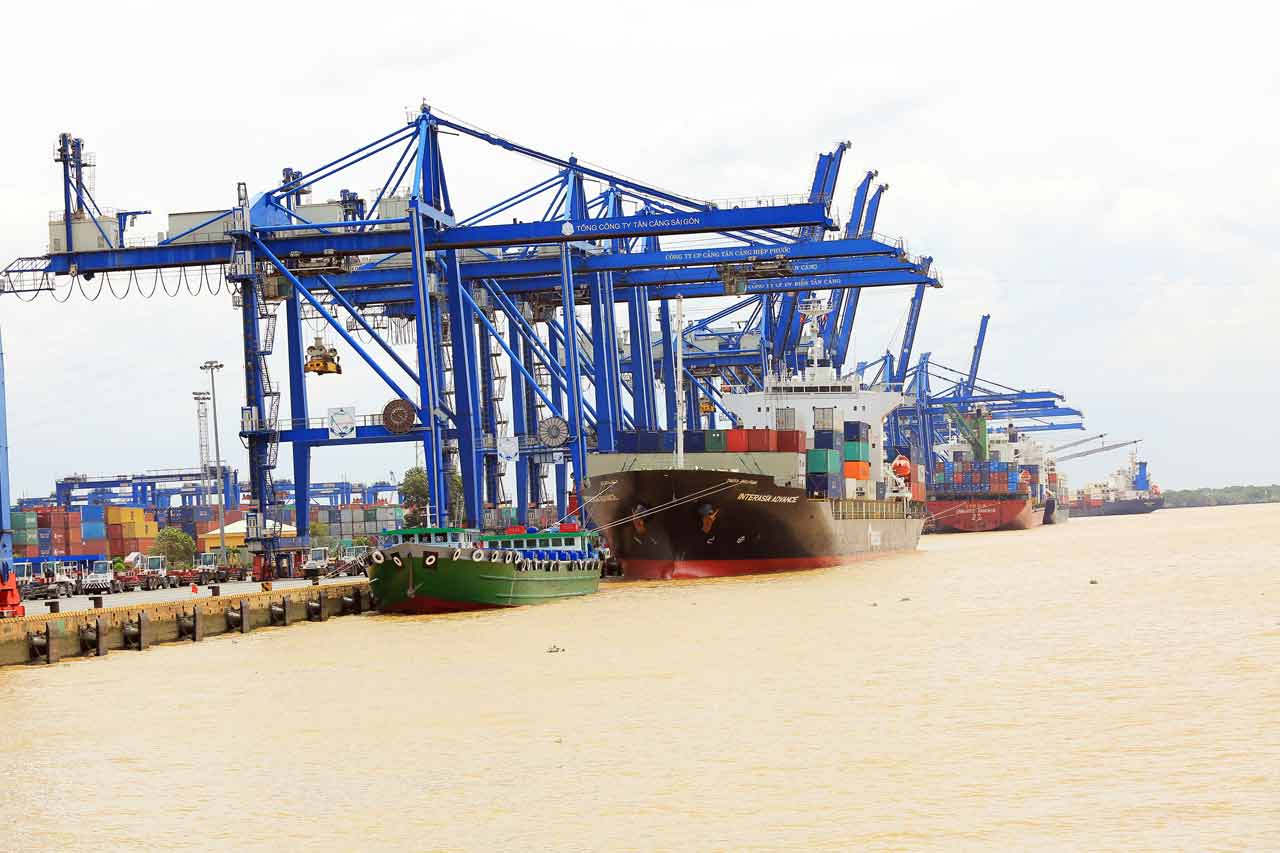Congestion at the Cat Lai Terminal in HCMC and its surrounding areas is a common sight but the reasons for the congestion and the solutions to reducing jams remain unclear. The Trade Facilitation Program financed by the United States Agency for International Development (USAID) has completed a prefeasibility study on anti-congestion and facilitating trade logistics at the Cat Lai Port, with three main groups of recommendations.
Challenges facing Cat Lai Port
Situated on the Soai Rap River, some 24 kilometers from downtown HCMC and 37 kilometers from the Cai Mep terminal in Ba Ria-Vung Tau Province, the Cat Lai Port plays an important role in international trade though the port is too small to receive deepwater vessels, as the Cai Mep Port does. Despite its good performance, the Cat Lai Terminal is facing several challenges causing overloading and lessening economic operations.
The first challenge threatening the stability and efficiency of the Cat Lai Port is traffic congestion. In 2019, some 6.45 million TEUs were handled in HCMC, with over 4.9 million 20-foot containers handled at the Cat Lai Port. The volume of containers via the port soared to 5.82 million TEUs in 2020, according to the report.
According to Saigon Newport Corporation, the operator of the Cat Lai Port, each day sees 16,400 vehicles arrive at the port on average. The figure reaches up to 22,000 vehicles at times. These vehicles must line up waiting for two or three hours before passing through the gate of the port, causing severe congestion in the surrounding area. A line of 16,400 trucks stretches 322 kilometers.
The demand for addressing the traffic congestion becomes urgent due to the rising volume of containers going through the Cat Lai Port. The volume is forecast to double by 2030, piling pressure on the current infrastructure and port system.
Besides, the increase in containers will weaken the capacity of customs agencies and other units in charge of handling transactions and documentation. Customs operations at the Cat Lai Port are going well, but will face some challenges if commercial transactions accelerate.
The stronger commercial flow will increase the burden on all services and the existing operation process at the port, especially those conducted in writing.
Customs agencies face an escalating volume of transactions and need to cater to the needs of all communities of traders. They use various information technology systems to handle goods transport, but these systems are not as reliable as they were meant for initial purposes. As such, handling transactions continues depending on paper-based procedures. Also, incomplete digitalization will slow down the customs operation at the port in the coming years.
Immediate fixes for this problem
The pre-feasibility study pinpoints recommendations classified into three groups to ease congestion and facilitate trade logistics at the port.
The first group of recommendations focuses on technical improvement, which is thought to be trivial but is extremely practical to help ease congestion. This can be conducted right now and will bring about positive results. The group factors in building truck yards near the Cat Lai Port, increasing the number of lanes at the port’s gate, quickening procedures at the gate and setting up priority lanes geared for previously cleared containers.
Next, it is vital to leverage information technology solutions to enhance operational performance. The study suggests installing optical character recognition tools, radio frequency identification devices and cameras at the gate of the port to shorten the handling time.
In addition, the street turn solution, meaning delivering a load and then using empty containers to pick up another load, should be employed at the port to help reduce the trips and number of vacant vehicles.
Furthermore, a terminal operating system, or TOS, will play a key part in controlling and optimizing the movement of containers at the port. Currently, containers that are obviously capable of customs clearance and those barely capable are jumbled together, making it hard to clear the former.
The final group of recommendations is associated with the supervision and assessment of effectiveness. The group focuses on building a Key Performance Indicator system and the national port management information system. For enterprises, TOS can collect data from real-life trade operations at each port. These data garnered from all ports nationwide will provide useful information for the Government’s supervising and planning operations to ensure the competitiveness of the national port system.
As for operations related to designing and deploying a port management information system, the Vietnam Maritime Administration currently has no database or information systems to help make decisions, control and plan ports and maritime infrastructure. As a result, the urgent need is to build and update the database for the port management information system to manage administrative procedures associated with vessels and traffic flows and manage data on port services and infrastructure.
Congestion at the Cat Lai Port is a typical example, urging agencies and units to take action to avoid a similar problem at other ports in the country. Applying technology, especially digital technology, to data-related operations is needed to boost the efficiency of Vietnam’s port system. Hopefully, such valuable recommendations will be weighed carefully and put into practice as soon as possible.











